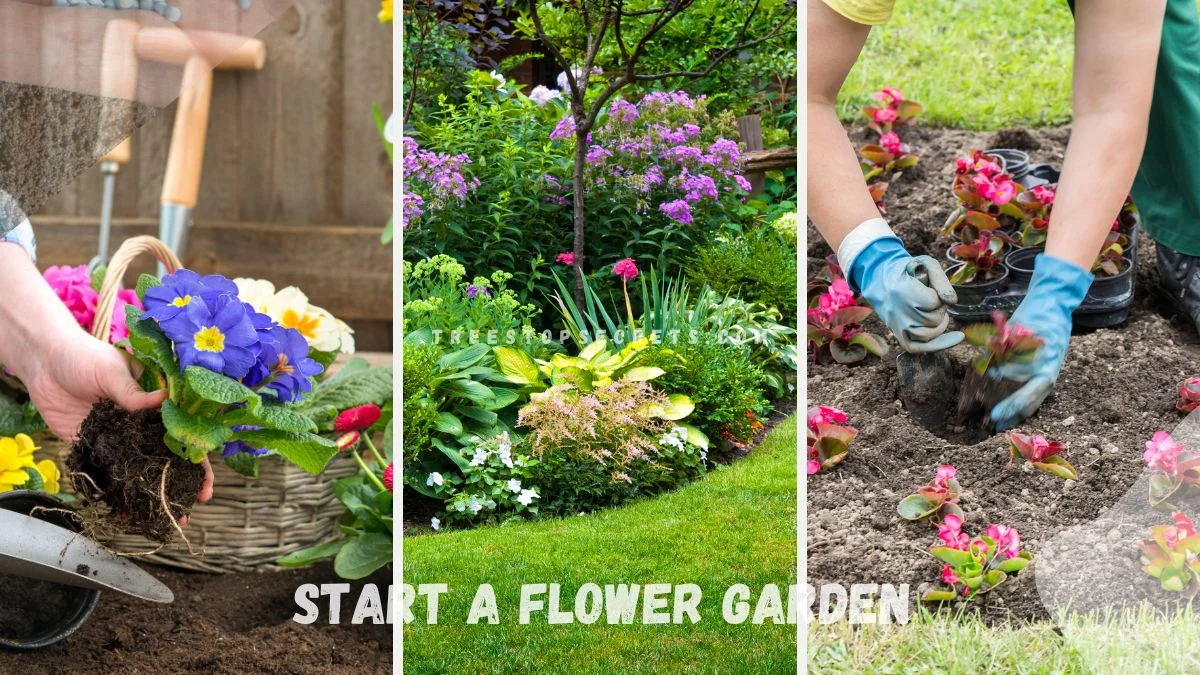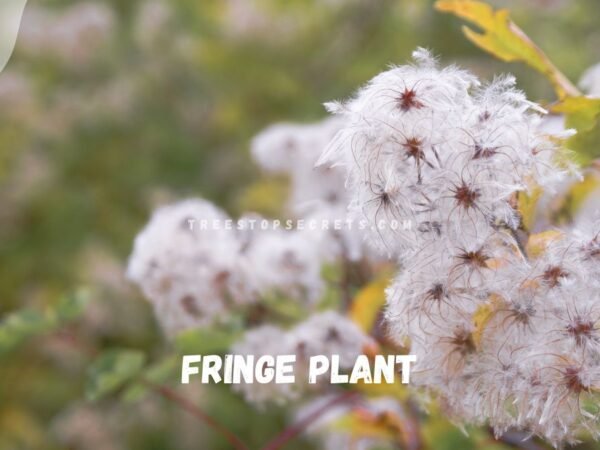Did you know that starting a flower garden can boost your mood and reduce stress levels? If you're wondering how to begin this fulfilling journey as a beginner gardener, you're in the right place. Creating a beautiful and vibrant flower garden doesn't have to be daunting. With the right guidance and a bit of creativity, you can cultivate your own colorful oasis right at home.
Key Takeaways
- Choose a sunny location: Select an area for your flower garden that receives ample sunlight for optimal plant growth.
- Test your soil: Conduct a soil test to determine its pH and nutrient levels, ensuring the right conditions for your flowers to thrive.
- Consider growth zones: Understand the USDA plant hardiness zone of your region to choose flowers that will flourish in your area.
- Plan your flower bed: Design the layout of your garden bed, considering factors like spacing, height, and color combinations for a visually appealing result.
- Select suitable flowers: Pick flowers based on your zone, soil type, and personal preferences to create a diverse and vibrant garden.
- Regular garden care: Maintain your garden by watering, fertilizing, weeding, and pruning as needed to keep your flowers healthy and blooming.
Choosing Your Location
When starting a flower garden, finding the right spot is crucial for your plants to thrive. Identify locations based on water, sunlight, and soil needs. Consider factors like drainage, sunlight exposure, and potential obstructions.
Ensure the chosen spot has proper sunlight duration for your flowers. Evaluate if it meets plant requirements - full-sun, partial-sun, or shade. Use tools like a sun calculator to determine the best spots for sun-loving plants.
Testing Your Soil
Soil Quality
Assess the soil quality by conducting a soil test to understand its composition. Look for signs of compacted soil, poor drainage, or nutrient deficiencies that may affect plant growth. Consider adding organic matter or soil amendments to improve soil structure and fertility.
Adjusting pH
Learn about the importance of soil pH levels for different types of flowers. Use pH testing kits to determine the acidity or alkalinity of your soil. Adjust the pH levels using natural additives like lime or sulfur to create an optimal growing environment.
Understanding Growth Zones
When it comes to USDA Zone Info, it's essential to determine your specific growing zone. This helps in selecting plants that will thrive in your climate. Researching plants suitable for your zone is crucial for their survival and growth. Microclimates within your garden can create variations in growing conditions, impacting plant health.
- Pros:
- Helps in selecting plants suited to your climate.
- Ensures plant survival and healthy growth.
- Cons:
- Limitation in plant variety based on zone restrictions.
Understanding your USDA growing zone is vital as it directly impacts the success of your garden. For example, if you live in USDA Zone 5, you should choose plants like tulips and peonies that are well-suited to colder temperatures. On the other hand, if you reside in USDA Zone 10, tropical plants such as hibiscus and bougainvillea thrive in warmer climates.
Researching plants suitable for your specific zone is a key step in creating a successful flower garden. For instance, if you are in Zone 7, you might consider planting daylilies, which are known for their adaptability to various growing conditions. Understanding the microclimates within your garden, such as areas with more sunlight or shade, helps in placing plants where they will flourish best.
- Key Information:
- Determine your USDA growing zone.
- Research plants suitable for your zone.
- Consider microclimates within your garden for optimal plant placement.
Creating Your Flower Bed
Bed Preparation
Decide on the type of flower bed (in-ground or raised) based on your preferences and space availability. Clear the chosen area of any existing vegetation and prepare the soil for planting. Consider using landscape fabric or mulch to prevent weed growth and retain moisture.
Size and Shape
Plan the size and shape of your flower bed based on the available space and design preferences. Use curved lines and varying heights to create visual interest in your garden. Consider the surrounding landscape and structures when determining the size and shape of your garden bed.
Selecting Your Flowers
Pick Your Plants
Research and select flowers based on your garden goals, like attracting pollinators or creating a low-maintenance garden. Consider factors such as bloom time, height, and color for a cohesive look. Explore native plant options suited to your local climate for less maintenance.
Annuals vs Perennials
Understand the differences between annual and perennial flowers in terms of lifespan and maintenance. Choose a mix of both types to ensure continuous blooms throughout the seasons. Consider the effort for planting annuals yearly versus the long-term benefits of perennials.
Designing Your Garden
Color Scheme
Select a color scheme for your flower garden to create a harmonious and visually appealing design. Limit the palette to two to three colors for a cohesive look. Using color theory principles can help create contrast or harmony in your garden.
- Pros:
- Creates visual appeal
- Enhances overall garden design
- Cons:
- Limited color choices
- Requires careful planning
Group flowers with similar care requirements together to simplify maintenance tasks. Creating clusters of flowers not only enhances visual impact but also helps in establishing focal points in your garden. Consider factors like bloom time and height when clustering flowers for a balanced composition.
Cluster Flowers
- Simplifies maintenance
- Enhances visual impact
- Establishes focal points
Incorporate focal points such as tall plants, sculptures, or decorative elements to draw attention in your garden. Utilize these strategically to create visual interest and guide the viewer's gaze through the space. Consider the placement of focal points in relation to surrounding plants and structures for maximum impact.
- Key Information:
- Focal points draw attention
- Enhance visual interest
Planting Your Garden
Seeds or Plants
Decide whether to start your flower garden from seeds or plants based on your gardening experience and time availability. Consider factors like germination time, transplanting success, and cost when choosing between them. Explore seed starting techniques or nurseries for a wide selection of flower varieties.
Planting Techniques
Follow proper planting techniques like digging appropriate holes, spacing plants correctly, and watering thoroughly. Consider using a planting guide or marker for proper plant placement and spacing. Mulch newly planted flowers to retain moisture, suppress weeds, and protect roots from temperature fluctuations.
Garden Care Basics
Watering Tips
Creating a watering schedule is essential to ensure your flowers thrive. Consider the plant's needs, weather, and soil moisture levels. Utilize soaker hoses or drip irrigation for precise root watering. Watch for signs of over or underwatering to adjust accordingly.
When it comes to pests, be on the lookout for aphids, slugs, and caterpillars that can harm your garden. Employ natural methods like companion planting or handpicking pests. Regularly check for infestations and take immediate action to prevent damage.
Fighting Pests
To maintain a healthy flower garden, understanding how to properly water your plants is crucial. Develop a watering schedule based on plant requirements, weather conditions, and soil moisture levels. Utilize tools like soaker hoses or drip irrigation systems to deliver water directly to the roots, promoting optimal growth and reducing water waste.
Identifying common garden pests such as aphids, slugs, or caterpillars is key to protecting your flowers. Implement natural pest control methods like companion planting, which involves growing certain plants together to deter pests. Handpick pests when possible or use organic pesticides sparingly to minimize harm to beneficial insects.
Enjoying Your Garden
Maintenance Routine
Establish a regular maintenance routine to ensure your flower garden stays healthy and vibrant. Tasks like deadheading, weeding, and fertilizing are essential for the well-being of your plants. By staying on top of these tasks, you can prevent issues like overgrowth or pest infestations.
Keep an eye on your plants' growth patterns and overall health. Adjust your maintenance schedule based on their needs, such as increasing watering during hot spells or providing extra nutrients when necessary. Monitoring blooming patterns helps you anticipate when certain flowers may need extra care.
Consider the importance of seasonal maintenance to keep your garden flourishing throughout the year. Tasks like pruning, dividing plants, or preparing for winter are crucial for maintaining a successful garden. By planning ahead and staying proactive, you can address seasonal challenges effectively.
Seasonal Changes
Prepare your garden for seasonal changes by adapting your care routine accordingly. Adjust watering schedules, fertilization practices, and mulching techniques based on the changing seasons. This ensures that your plants receive the right support at the right time.
Plan ahead for seasonal blooms by selecting flowers with staggered blooming periods. This strategic approach allows you to enjoy a continuous display of colorful blooms throughout the year. By diversifying your plant selection, you can create a visually appealing garden that thrives in every season.
Protect delicate plants from extreme weather conditions during seasonal transitions. Be prepared for frost by covering sensitive plants or bringing them indoors when needed. Similarly, shield your garden from heat waves by providing adequate shade and hydration to prevent wilting or sun damage.
Summary
You've learned how to kickstart your flower garden journey by choosing the right spot, testing your soil, and understanding growth zones. Creating a beautiful flower bed, selecting the perfect flowers, and designing your garden layout are crucial steps. Planting and caring for your garden will ensure its vibrancy, leading to a space where you can relax and enjoy the beauty of nature. Remember, regular maintenance is key to keeping your garden thriving and flourishing.
Now that you're equipped with the essential know-how, it's time to put these tips into action. Get your hands dirty, plant those flowers, and watch your garden bloom into a colorful oasis. Embrace this fulfilling experience and revel in the joy that tending to a flower garden brings. Happy gardening!
Frequently Asked Questions
How do I choose the best location for my flower garden?
Select a spot with at least 6 hours of sunlight, good drainage, and proximity to a water source. Consider factors like wind exposure and accessibility for maintenance when choosing your garden location.
How can I test my soil before starting a flower garden?
Perform a soil test using a kit from a garden center or cooperative extension office. This will help you determine the pH level, nutrient content, and composition of your soil, allowing you to make necessary amendments for optimal plant growth.
What are growth zones, and why are they important for my flower garden?
Growth zones indicate the climatic conditions in a specific region that affect plant growth. Understanding your zone helps you select flowers that will thrive in your area's temperature and weather patterns, ensuring the success of your garden.
What should I consider when creating a flower bed for my garden?
When creating a flower bed, focus on factors like size, shape, and edging. Ensure proper spacing between plants for growth, consider the height and color combinations of flowers, and incorporate organic matter into the soil for better plant nutrition.
How do I design an aesthetically pleasing flower garden layout?
Design your garden layout by considering aspects like color schemes, plant heights, bloom times, and textures. Create focal points, use symmetry or asymmetry based on your preference, and add elements like pathways or decorative features to enhance the visual appeal of your garden.
Image Source: Paid image from CANVA



